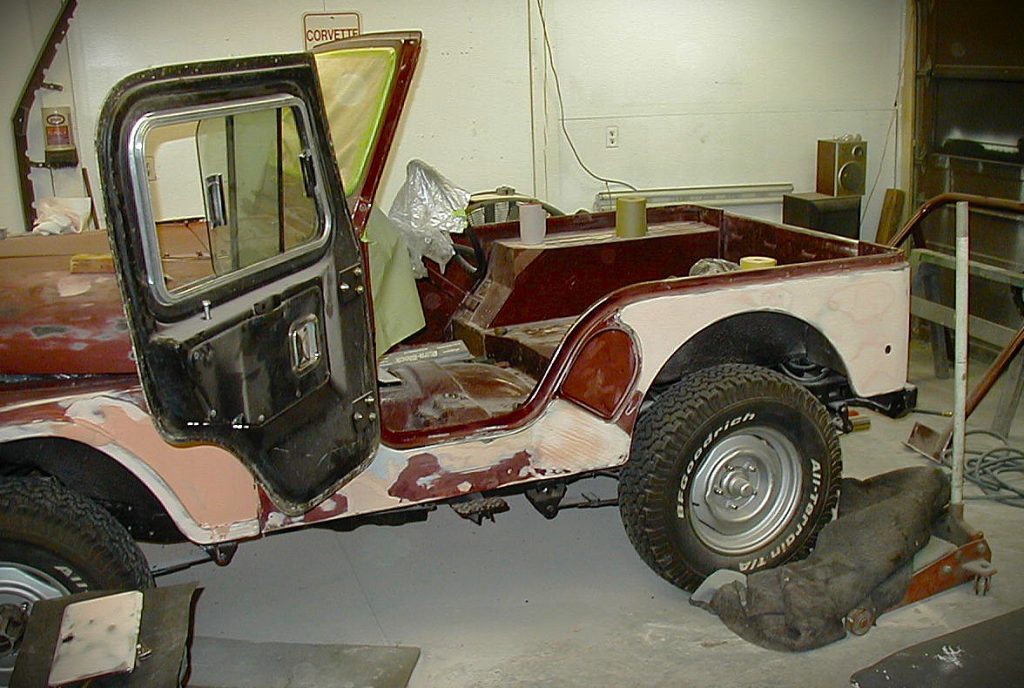Application of body filler is a vital step in the automotive body work process if you want a successful paint job. When used properly, it can help conceal minor body imperfections, smooth out body panels, and create laser-straight body lines.
But did you know there is more than one type of body filler?
In fact, there are several—and each type of auto body filler has a specific job in the paint and bodywork process. Understanding those differences is the first step in learning how to use auto body filler, so we put together this handy body filler guide to help you out.
This is a companion article to our Choosing the Right Sandpaper story. We also created a six-part Automotive Paint Guide series that might be helpful here. You may want to check out our Paint and Bodywork Buyer’s Guide too.
But before we get to the Body Filler Comparison Chart, let’s talk specifically about the different types of body filler.

Reinforced Body Filler
Reinforced body fillers contain metal or fiberglass for added strength. While this means they’re harder to work with, reinforced body fillers can fill small holes and add rigidity to body panels. They are normally used as a first layer over welds, small holes, or for heavy body work.
Reinforced fillers will have words like “metal,” “fiber,” or “glass” in their name.
Standard Body Filler
Standard body fillers will usually just say “body filler” on the can. It’s not the easiest to work with, but is pretty inexpensive.
Here’s a tip for working with standard body filler: Make sure it’s labeled “stain free” or “stain resistant”. If not, color from the filler can bleed through and stain your paint. It is also best to apply a finish coat of polyester glaze.
Premium Body Filler
Premium fillers are all stain free. With a little extra work, you can finish these fillers without the need for putty or glaze. Premium fillers tend to be on the thinner side so you may have to apply more coats for heavy bodywork.
They are often labeled “premium” or have names like “lightweight, “ultra,” gold,” or “platinum.” You pretty much get what you pay for. The more it costs, the easier it will be to finish.
Polyester Glaze
Polyester glazes can be used to fill scratches and very small dents. They can be applied over bare metal, fiberglass, other fillers, and cured 2K Coatings. They are thin and easy to work with, but can shrink if applied too thick.
Polyester glazes require hardener. They will have some combination of the words: “glaze,” “putty,” “finishing,” or “polyester” in their name.
Finishing Putty
Finishing putty comes ready to use, in what looks like a toothpaste tube. It should only be used to fill light scratches in body filler or cured 2K coatings. It is very thin and will shrink if put on too thick.
***
So, how do you know which auto body filler to use? The tech experts at Summit Racing put together this very handy body filler chart that’ll tell you exactly which type to use for which paint and body job. Check it out below.
Body Filler Comparison Chart
| Reinforced Body Filler | Standard Body Filler | Premium Auto Body Filler | Polyester Glaze | Finishing Putty | |
|---|---|---|---|---|---|
| Cost | High | Low | Medium-HIgh | Very High | High |
| Texture | Very Thick | Thick | Medium | Thin | Very Thin |
| Sanding | Very Hard | Hard | Easy | Very Easy | Very Easy |
| Pinhole Resistance | Very Poor | Poor | Good | Very Good | Very Good |
| Hardener Required | Yes | Yes | Yes | Yes | No |
| Max. Sanded Thickness | 1/4" | 1/4" | 1/4" | 1/8" | 1/16" |
| Best Usage | Filling small holes & heavy body work | Heavy to medium body work | Heavy to light body work | Very light body work & filling scratches | Filling light scratches |

[…] Application of body filler is a vital step in the automotive body work process if you want a successful paint job. When used properly, it can help conceal minor body […] Read full article at http://www.onallcylinders.com […]
[…] Paint & Body Tech: What Type of Body Filler Should You Use?: https://www.onallcylinders.com/2020/12/01/paint-body-tech-what-type-of-body-filler-should-you-use/ […]
[…] is a companion article to the Choosing the Right Body Filler story. We also created a six-part Automotive Paint Guide series that might be helpful […]